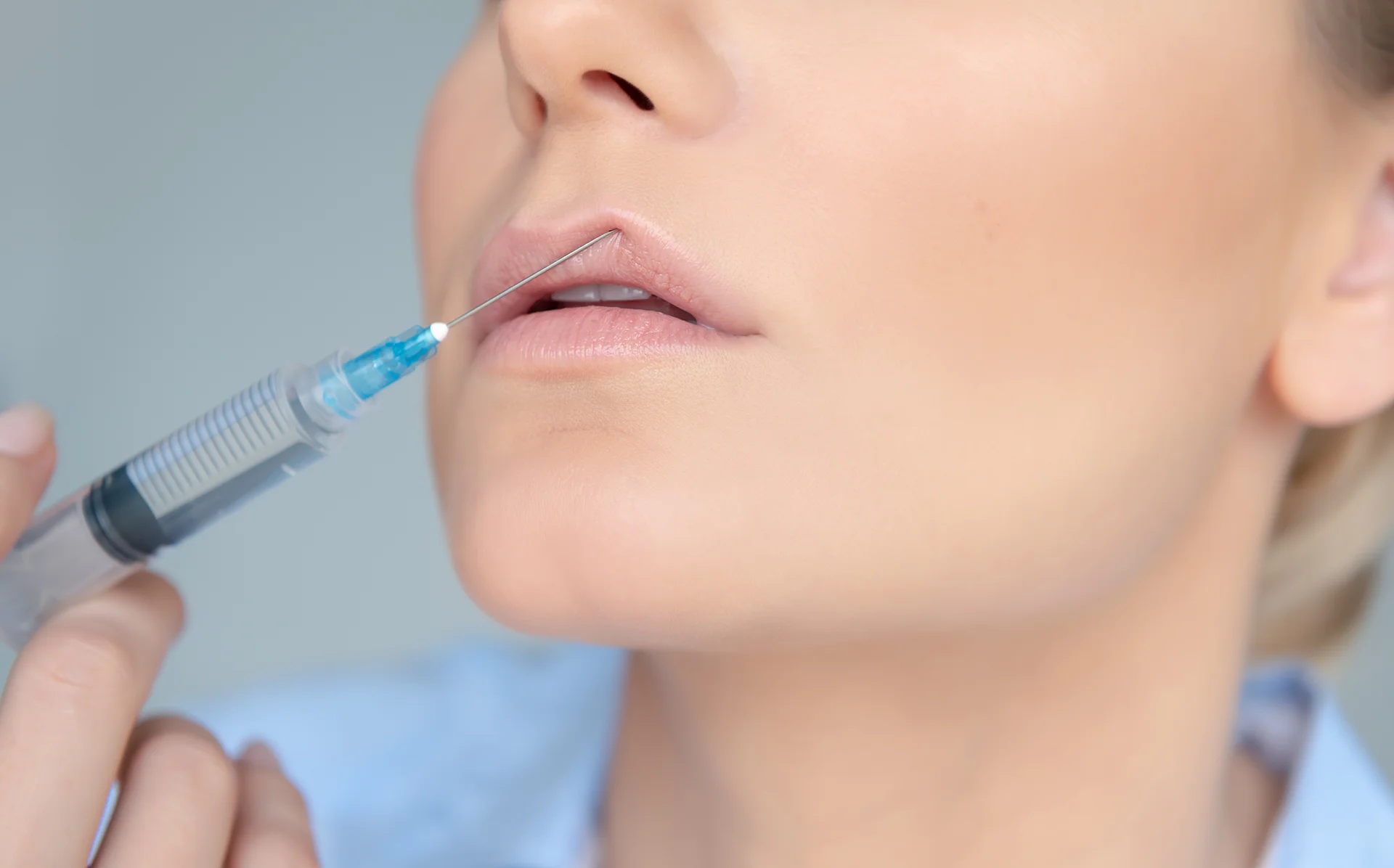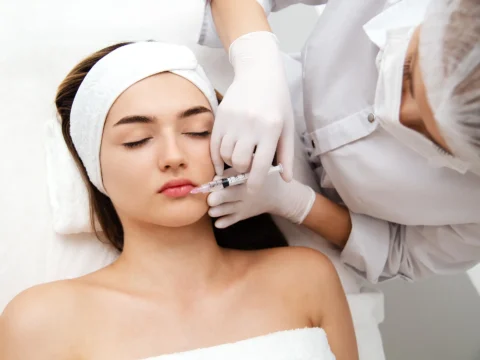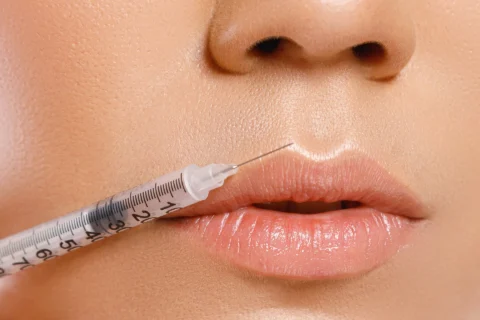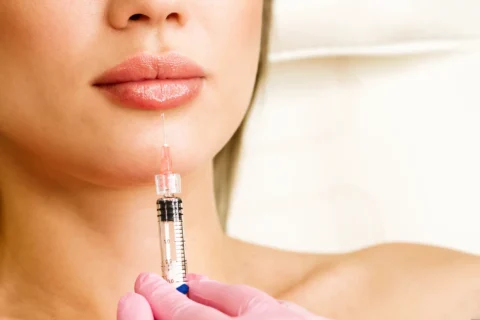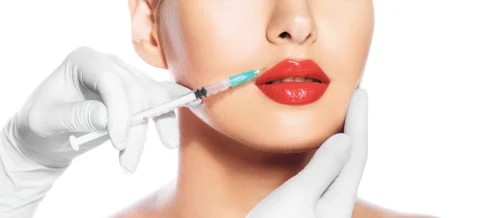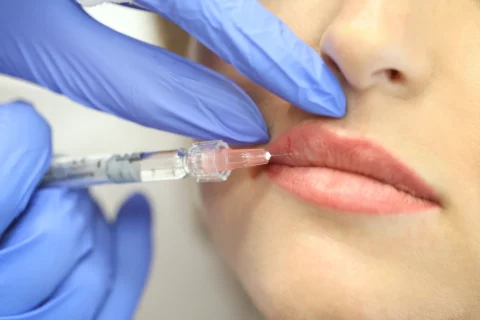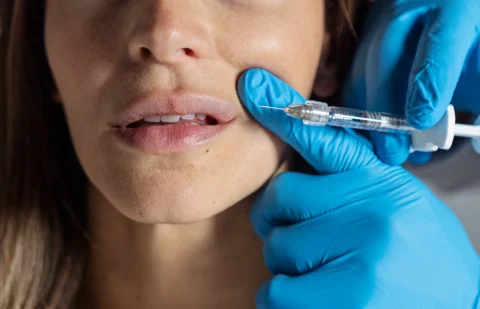Understanding Swelling: The Body’s Response to Lip Fillers
With advanced dermal fillers like Juvederm Volbella that contain hyaluronic acid, patients can achieve a subtle yet defined enhancement of their lips and cupid’s bow.
However, it’s common to experience some swelling and tenderness for a few days after lip filler injections. This temporary side effect has left many patients wondering how to prevent swelling after lip fillers.
At Ethos Aesthetics + Wellness, Dr. Hardik Soni emphasizes the importance of proper aftercare to help minimize swelling and speed up recovery time. Follow these medically-backed tips and professional advice to heal your lip fillers faster.
Why Does Swelling Occur After Lip Fillers?
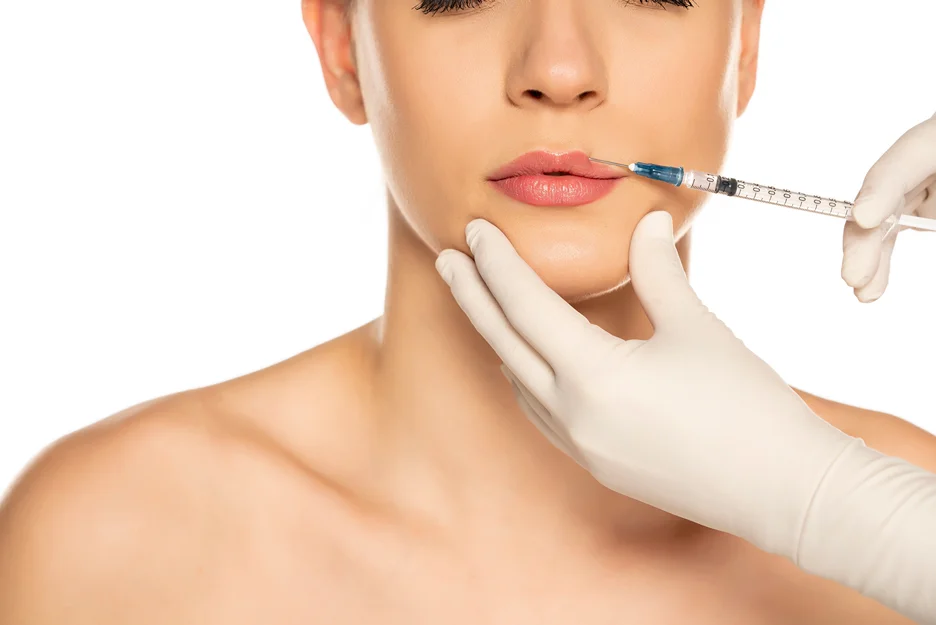
Swelling is caused by your body’s natural inflammatory response to lip filler injections. The needle pierces the delicate tissue of the lips, where minor bleeding and trauma trigger the release of chemical messengers that make blood vessels leaky.
As Dr. Soni explains, “When hyaluronic acid fillers like Juvederm Volbella are introduced via injection, it causes some inevitable irritation. This leads to inflammation and swelling as the body reacts to a ‘foreign’ substance and rushes nutrients and fluid to repair and protect the area.”
While unsettling, keep in mind that swelling is only temporary and a normal part of the healing process. Proper aftercare can help minimize its extent and duration.
Minimizing Swelling After Lip Fillers
Is Ice Effective in Reducing Swelling After Lip Fillers?
Yes, icing is one of the most effective remedies advised by aesthetic professionals like Dr. Soni to prevent significant swelling after lip fillers.
Applied for 10-15 minutes several times a day, the cold temperature constricts blood vessels, slowing down fluid leakage and accumulation in the treated area. This helps restrict inflammation and curb swelling.
For best results, use an ice pack wrapped in a paper towel or cloth. Do not place ice directly on the sensitive skin post-injections. Set a timer and limit each icing session to 10-15 minutes, taking breaks in between.
Should I Ice Immediately After Lip Fillers?
The experts at Ethos Aesthetics recommend icing the area immediately after your lip filler appointment.
“Swelling begins within the first few hours as the inflammatory response kicks in,” says Dr. Soni. “Icing right away helps preempt significant swelling later on.”
Apply cold compresses as soon as you get home or have someone help ice your lips in the clinic room itself. Continue for that day and the next two to three days as needed. Avoid over-icing, however, as it can irritate the tender skin.
How Often to Ice After Lip Fillers?
Icing regularly and frequently in the first 24-72 hours is key. Dr. Soni advises icing for 10-15 minutes every hour on the day of treatment.
“On the second and third days, ice every 2 hours or so,” she says. “Taper off as swelling subsides, usually within 3 to 5 days.”
Listen to your skin – if icing is too harsh, switch to a cold compress instead. Avoid direct skin contact and never ice for more than 15 minutes at a time.
How to Heal Lip Fillers Faster
What Role Does Aftercare Play in Lip Filler Healing?
Your aftercare during the first 72 hours is very important for reducing swelling and recovering quickly after getting lip fillers. Follow all instructions given by your cosmetic practitioner after the procedure.
This includes icing, head elevation while sleeping, avoiding touching or massaging the area, staying hydrated, and using any prescribed or recommended medicines. Follow-up promptly if you have concerns.
Taking proper aftercare measures as advised by professionals like Dr. Soni can significantly reduce your downtime and discomfort after lip fillers.
Can Anti-inflammatory Medications Help After Lip Fillers?
Yes, taking over-the-counter anti-inflammatory medications can further minimize swelling and help you heal faster. However, do check with your doctor first.
As Dr. Soni suggests, “Non-steroidal anti-inflammatory drugs like ibuprofen may help reduce inflammation after lip fillers if the patient has no contraindications. But please consult me or your healthcare provider before taking any medication after the procedure.”
Your practitioner may also prescribe stronger prescription-strength oral or topical anti-inflammatories in certain cases. Follow medical advice and take medicines only as directed.
Specific Concerns and How to Address Them
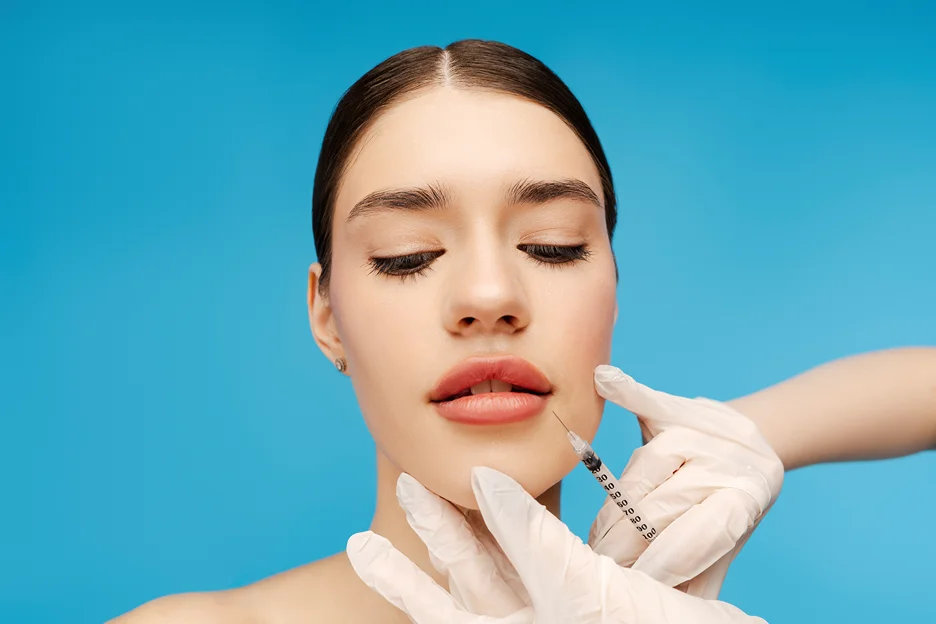
How to Deal With Face Swelling After Lip Fillers?
Mild facial swelling extending beyond the lips may occur, peaking at around days 2-4 before subsiding. It’s nothing to worry about.
Dr. Soni advises, “Sleep with your head elevated on 2-3 pillows to avoid any gravity-related swelling extending to the cheeks or under eyes. Avoid salty foods and alcohol that can worsen fluid retention. Icing also helps minimize broader swelling.”
Call your provider promptly if severe facial swelling, pain, redness, or hardness arises – there may be an underlying complication requiring attention.
Swelling After Russian Lip Filler: Is It Different?
The Russian lip technique using a cannula rather than needle may reduce swelling and bruising slightly compared to a traditional injection. But the difference is minimal.
“There may be slightly less swelling and trauma with a cannula as it requires fewer injection points than a needle,” explains Dr. Soni. “But swelling and proper aftercare remains essential with any lip filler method.”
Follow all the same aftercare and icing instructions as you would with a regular needle injection technique. Recovery is largely similar; the Russian lip technique only marginally limits early swelling.
Managing Expectations: Swelling Stages and Recovery Time
Understanding the typical stages of swelling and the recovery timeline can help manage expectations and reduce anxiety post-treatment.
Swelling usually peaks within the first 48 hours and gradually subsides over the next few days.
Dr. Soni emphasizes that recovery varies by individual but generally follows a predictable pattern, with most patients experiencing significant improvement within 1-2 weeks.
Advanced Tips for Reducing Swelling
What Reduces Swelling After Lip Fillers?
In addition to cold therapy, Dr. Soni recommends:
- Keeping your head elevated, including when sleeping
- Avoiding spicy, salty, or acidic foods and drinks initially
- Drinking lots of water to stay hydrated
- Taking anti-inflammatories as discussed
- Avoiding strenuous activity for a few days
- Gentle heat compresses after the first 2-3 days
Avoid touching, rubbing, or massaging the treated area. Follow all aftercare instructions closely for reduced swelling and optimal lip filler results.
How Does Blood Flow Affect Lip Filler Recovery?
Improved blood flow can significantly impact the healing process after lip filler injections.
Enhanced circulation delivers more oxygen and nutrients to the treated areas, supporting tissue repair and reducing the duration of swelling.
Dr. Soni recommends light activity, such as gentle walking, to boost circulation while avoiding strenuous exercise that might exacerbate swelling or bruising.
The Role of Hydration and Diet
Staying well-hydrated is crucial for speeding up recovery after lip fillers. Drinking plenty of water facilitates better blood flow and helps the body flush out toxins and reduce swelling.
Additionally, minimizing salty foods can prevent unnecessary fluid retention, while foods rich in vitamins C and K can support skin health and healing.
Can Arnica Help with Swelling After Lip Fillers?
Arnica is widely regarded for its anti-inflammatory properties and is often recommended by cosmetic surgeons, including Dr. Soni, to manage bruising and swelling.
Available as creams, gels, or oral supplements, arnica can be a valuable addition to your aftercare regimen, starting a few days before and continuing after the treatment to minimize swelling and bruising.
Importance of Lip Filler Placement and Technique
The technique and placement of lip filler injections play a pivotal role in the recovery process.
Experienced injectors, like the professionals at Ethos Aesthetics + Wellness, use precise techniques to minimize tissue trauma and ensure an even distribution of the filler.
This not only reduces the risk of excessive swelling but also contributes to a smoother recovery and more natural-looking results.
When to Consult Your Practitioner
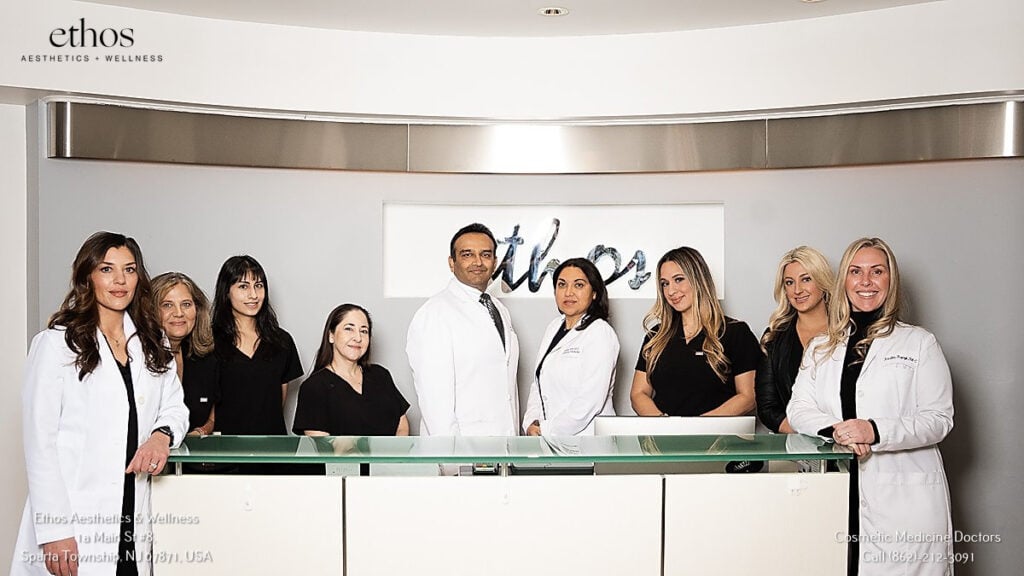
Recognizing Signs of Complications
Monitor any swelling and contact your aesthetic provider like Dr. Soni promptly if you notice:
- Excessive swelling lasting over 5 days
- Severe or worsening asymmetry
- Extreme tenderness, pain, throbbing or hardness
- Redness, bruising and swelling that worsens or spreads
- Pus, oozing, bleeding or discharge
- Fever, chills, nausea or feeling unwell
Seeking timely medical advice can prevent further complications and potential need for reversal treatment. Trust your provider like the experts at Ethos Aesthetics + Wellness to guide your aftercare journey.
Conclusion
Swelling or light bruising is common after lip fillers, but resolves on its own within 3-10 days typically.
Be diligent with aftercare, icing, head elevation, avoiding irritants, and contacting your provider promptly if you have concerns.
With your provider’s expert advice, you can take the right measures to minimize swelling and recover faster from your lip augmentation.
Follow professional aftercare guidance to ensure smooth healing and the best possible cosmetic outcome.

